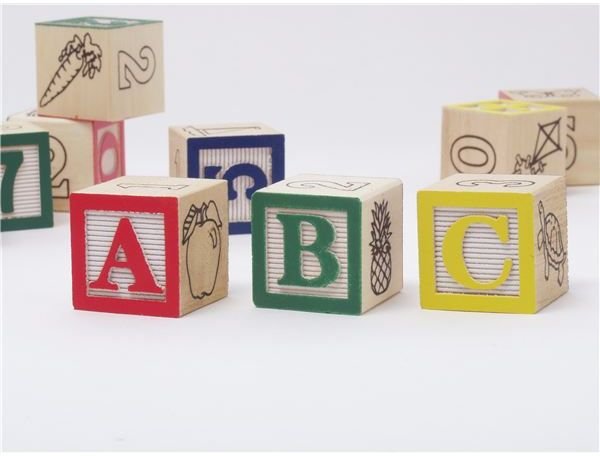Fun & Creative Ideas to Help a Child Learn the Alphabet at Home
Letter Play
It may be tough to know when your preschooler is ready to start learning the letters of the alphabet. For the most part, go with your gut parenting instincts. Around the age of two to three, children start to make connections between the printed text in books and the words their parents are reading out loud to them. Allowing children to play with letters and writing will further this understanding and help little ones learn the alphabet.
Magnetic Letters: Keep a bucket of magnetic letters close at hand. These simple plastic toys can be purchased almost anywhere, and usually are quite economical. Allow children to place the letters on the refrigerator door, or provide a dry erase board or other magnetic surface for simple letter play. Point out the letters that are in your child’s name, as these will likely be the letters your child recognizes first! Challenge your preschooler to find all of the letters of the alphabet and place them in order on the refrigerator door. Sing the alphabet song along with your child to help him remember the correct order.
Play Dough: An afternoon of creating with play dough can be fun for both you and your preschooler! Try creating letters with the play dough by rolling it into long snake shapes and cutting and arranging the dough into letters. Spell simple words such as “Mom” or “go” or your child’s name. Create a whole alphabet of dough letters and allow your preschooler to experiment with them on his own.
Cornmeal Writing: For a multi-sensory experience, sprinkle some cornmeal or flour into a shallow tray or baking pan. Use your finger to trace letters into the cornmeal and encourage your preschooler to do the same. For a simple game, try asking your preschooler to create the first letter of his first name, or draw a letter and have your preschooler draw the letter that follows it in the cornmeal.
Alphabet Games
Think beyond the typical alphabet song when creating alphabet activities with your preschooler and play some fun and silly games!
Alliterative Creatures: With your preschooler’s help, create an entire menagerie of alphabet creatures. Cut the alphabet letters out of posterboard or heavy construction paper and use googly eyes, pom pons, yarn and other craft materials to decorate them, creating alliterative animals or creatures for each letter. Some ideas include Emily Eagle for the letter E, Griffin the Giraffe for the letter G or Zach the Zebra for the letter Z. For letters that you cannot think of an animal, ask your preschooler for suggestions for zany creature names.
Going On A Letter Hunt: As preschoolers grow and develop and are able to recognize letters on their own, try this fun indoor game. Challenge your preschooler to find a letter in your home. The best place to search for letters is in your kitchen pantry and refrigerator. Food products often have lots of letters for preschooler’s to discover. To begin the game, ask your child to find a letter, such as “C”, and set a timer. See how long it takes your child to find the letter “C” in the pantry. See if he can beat his time with the next letter. You can easily adapt this game for long car rides and ask preschoolers to find letters on road signs or license plates.
Letter Bingo: Create simple Bingo cards using cardboard or heavy construction paper. Place a grid of fifteen to twenty alphabet letters on the card and give your preschooler a Bingo marker or round stickers to mark the letters he finds. Call out letters at random and see which letters your child can recognize. Switch roles and allow your child to call out the Bingo letters while you mark a card.
Alphabet Books: For a quieter activity, read a few alphabet books with your child. Some preschool favorites include:
- Alphabet Adventure by Audrey Wood
- I Spy: An Alphabet in Art by Lucy Micklethwait
- Chicka Chicka Boom Boom by Bill Martin, Jr.
- The Absolutely Awful Alphabet by Mordicai Gerstein
Remember that preschoolers learn best when they are actively engaged in the activities and play with your child. Repeat these games as often as your preschooler likes, as repetition is one way preschoolers grasp big concepts. You don’t need expensive computer games or DVD’s to teach your child the alphabet. Try some of these simple at-home ideas to help your child learn the alphabet and pique his interest in language.
References
- Photo Credit: MConnors http://morguefile.com/archive/display/3185
- Cryer, Debby, Thelma Harms and Adele Richardson Ray, Active Learning for Fours. Addison-Wesley (1996)
- Schickedanz, Judith A., More Than the ABCs: The Early Stages of Reading and Writing. NAEYC (1994)
